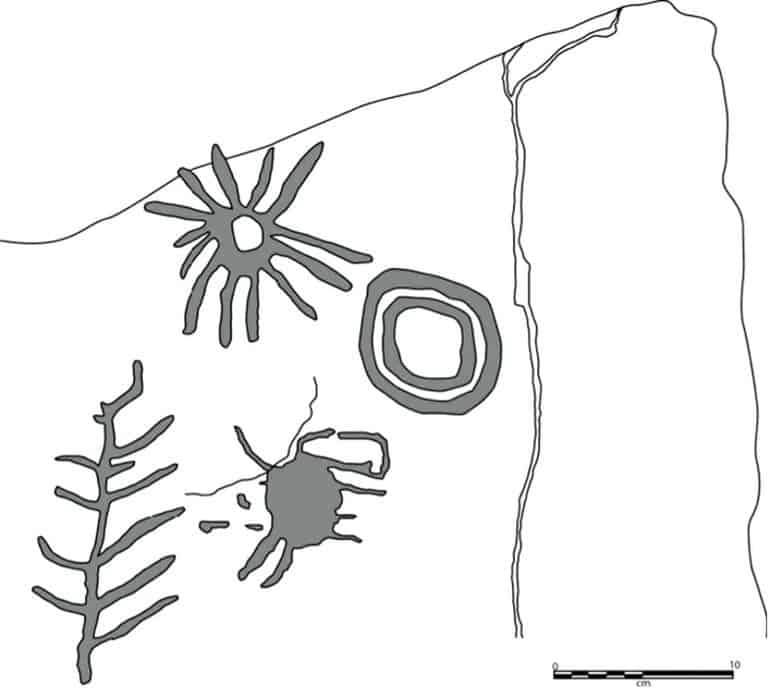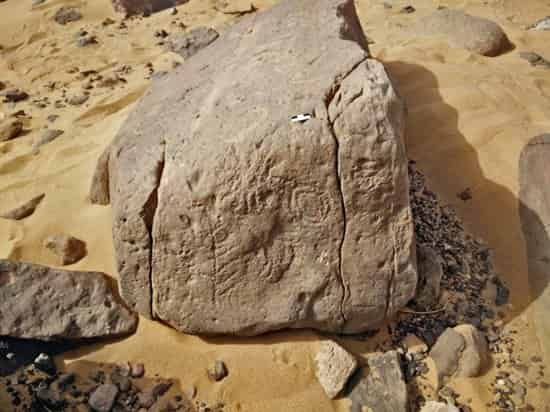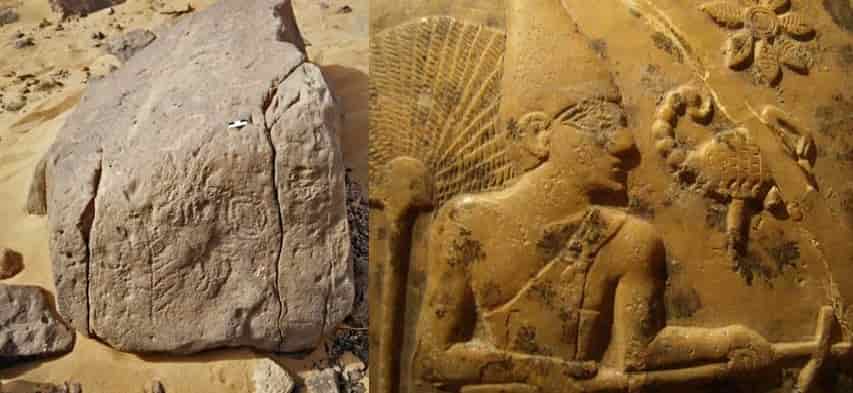A team of archaeologists has found what could be considered the first border marker in history in Egypt. It is a rock with hieroglyphs, the inscription of which marks the “domain of King Horus Scorpion.”
A group of researchers from the Egyptian Ministry of Antiquities and the University of Bonn has found what could be considered the first inscription in history identifying a territorial domain.
The rock is located in Wadi el Malik, near Aswan, in southern Egypt. Egyptologists have deciphered some hieroglyphs on it as “Domain of King Horus Scorpion.”
The rock displays four hieroglyphs, one of which is the name of the Scorpion king, while another indicates, according to the researchers, that the complete inscription is the name of the place itself, similar to a sign indicating the limits of a municipality.
In this case, it refers to a domain, which is a geographical and economic entity under the direct control of a single sovereign. Dr. Ludwig D. Morenz asserts that “this is the oldest known place marking in the world,” as the reign of the Scorpion king dates back to around 3070 BC.
This isn’t the first instance of finding a similar inscription, as these “domain names” have been discovered on cylinders, plates, and stamps before.
However, the significance of this discovery lies in the fact that an inscription had not previously been found in the same place it refers to, enabling its identification. Arguably, they have discovered the first known “border sign” in history.
The Enigma of the Scorpion King
The Scorpion king, a ruler of Egypt during the predynastic period or Dynasty 0, is a figure subject to various theories. According to some, he is considered the father of Narmer, the first pharaoh in history, while others suggest he might be an alternative name for Narmer himself.
Prior to this period, Egyptian rulers controlled relatively limited territories. It was during the reign of the Scorpion King that a centralized power first emerged, with authority over a territory sizable enough to be labeled a country. However, initially, this authority was confined to the Nile Valley, also known as Upper Egypt, excluding the delta region.
Dr. Morenz elaborates, “For the first time, the process of internal colonization in the Nile Valley becomes evident through writing.”
The Egyptologist points out that “the early use of writing in such a remote location is remarkable” and that “the inscription provides a glimpse into the genesis of the Egyptian state and its culture.” It concretely demarcates the boundary of the territory controlled by a single sovereign.
The area is still at a nascent stage of archaeological exploration, and the team aims to continue their investigations to achieve a more precise understanding of the consolidation of pharaonic power.
Source: National Geographic









